Appendix B
Panelists’ Biographies
MIMI AUNG is a project manager at NASA’s Jet Propulsion Laboratory (JPL) in Pasadena, where she is leading the project to develop a Mars helicopter technology demonstration. Since joining JPL in 1990 she has performed various roles in multiple disciplines on space flight and Deep Space Network (DSN) projects, technology development, and line management. She is passionate about space exploration, especially to advance the autonomous capability of spacecraft exploring deep space.
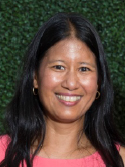
She started in the DSN development of its first operational digital receiver system, the Block V Receiver. She developed, analyzed, and tested receiver algorithms, and continued work through implementation to operationalization at all three DSN complexes across the globe. She then led a multidisciplinary team to evaluate the applicability of the monopulse technique for precise pointing of the 34-meter-diameter antennas, leading to operational use in the DSN. She next worked on the Earth Orbiting System Microwave Limb Sounder instrument as a cognizant engineer for the 240 GHz radiometer.
In 2000 she became project element manager for the autonomous formation flying sensor on the StarLight two-spacecraft interferometer mission, where she applied her knowledge of transmit/receive systems to the determination of interspacecraft range and bearing measurement for precise formation flying of multiple spacecraft. She went on to become the project element manager for formation flying on the Terrestrial Planet Finder project.
In 2003 she took on the additional duty of technical group supervisor, a line management position, for the Guidance, Navigation &
Control (GN&C) Sensors Group, where she was involved in next-generation sensor technologies required for future spaceflight missions. Her technical interest expanded to next-generation GN&C capabilities for increasingly autonomous space exploration. In 2010 she became manager of the Guidance and Control Section, where she emphasized the development of advanced GN&C technologies and their infusion in future missions for precision entry, descent, and landing on planetary surfaces; proximity operations about small bodies; multispacecraft precision formation flying; and precision pointing of spacecraft. In 2013 she became deputy manager of the Autonomous Systems Division responsible for spacecraft GN&C, power, avionics, flight software, and robotics. Since 2015 she has been the lead for Mars Helicopter technology demonstration development.
Ms. Aung earned her BS (1988) and MS (1990) in electrical engineering from the University of Illinois at Urbana-Champaign. Her MS thesis was in the area of signal processing and communications.
JAMES BELLINGHAM is a pioneer in the development of autonomous marine robots. He has led and participated in research expeditions around the world from the Arctic to the Antarctic. He is the founding director of the Center of Marine Robotics at the Woods Hole Oceanographic Institution, founded the Autonomous Underwater Vehicles Laboratory at MIT, and cofounded Bluefin Robotics. He serves on numerous advisory committees and boards, including the Secretary of the Navy Advisory Panel and several National Academies studies, and he chairs the Naval Research Advisory Committee.
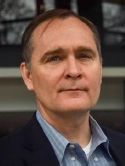
Dr. Bellingham’s honors include the Lockheed Martin Award for Ocean Science and Engineering, and selection as the MIT Fourteenth Robert Bruce Wallace lecturer. He received his SB, SM, and PhD in physics from the Massachusetts Institute of Technology.
JOICHI ITO is director of the MIT Media Lab, professor of the practice of media arts and sciences at MIT, and a visiting professor of law from practice at Harvard Law School. He is chair of the board of PureTech Health; a board member of the New York Times Company, MacArthur Foundation, and John S. and James L. Knight Foundation; cofounder and board member of Digital Garage; and strategy advisor of Sony Corporation. He is an independent senior advisor to the minister for financial services of Japan and a member of the Japanese Ministry of
Education, Culture, Sports, Science and Technology Center of Innovation (COI) STREAM governance committee. He is a visiting executive researcher of the Keio Research Institute and the Internet & Society Lab at Shonan Fujisawa Campus in Japan, and a faculty associate of the Berkman Center for Internet & Society at Harvard University. He has helped created numerous Internet companies including PSINet Japan, Digital Garage, and Infoseek Japan and was an early-stage investor in Twitter, Wikia, Flickr, Kickstarter, littleBits, Formlabs, and other companies. He maintains a weblog (http://joi.ito.com) and is the author, with Jeff Howe, of Whiplash: How to Survive Our Faster Future (Grand Central Publishing, 2016). He is also a PADI IDC staff instructor, an emergency first responder instructor, and a Divers Alert Network (DAN) instructor trainer.

Mr. Ito was named by Time magazine as a member of the “Cyber-Elite” in 1997, and in 2000 was listed as one of the 50 “Stars of Asia” by Businessweek and commended by the Japanese Ministry of Posts and Telecommunications. He was selected by the World Economic Forum in 2001 as one of the “Global Leaders for Tomorrow,” chosen by Newsweek as a member of the “Leaders of the Pack” in 2005, and listed by Vanity Fair as a member of “The Next Establishment” in 2007. Businessweek named him one of the 25 Most Influential People on the Web in 2008. In 2011 he was selected by Foreign Policy magazine as one of the “Top 100 Global Thinkers,” and he received the Lifetime Achievement Award from the Oxford Internet Institute in recognition of his role as one of the world’s leading advocates of Internet freedom. In 2011 and 2012 he was chosen by Nikkei Business as one of the 100 most influential people for the future of Japan.
He received a doctor of literature honoris causa from the New School in 2013, and the following year he was inducted into the SXSW Interactive Festival Hall of Fame and awarded the Golden Plate Award by the Academy of Achievement. In 2015 he received an honorary doctorate from Tufts University and ranked #68 on the WorldPost/GDI–Global Thought Leaders Index. In 2016 he was selected as one of the GK100: Boston’s 100 Most Influential People of Color and ranked #44 in the 2016 Wired 100 (UK). In 2017 he received the IRI Medal. He is a member of the American Academy of Arts and Sciences.
PATRICK LIN is director of the Ethics + Emerging Sciences Group, based at California Polytechnic State University, San Luis Obispo,
where he’s a philosophy professor. His research focus is technology ethics, broadly construed to include law and policy. He holds concurrent appointments at Stanford Law School’s Center for Internet and Society; University of Notre Dame’s Emerging Technologies of National Security and Intelligence (ETNSI) initiative at the Reilly Center; World Economic Forum’s Global Future Council on AI and Robotics; Foundation for Responsible Robotics; and the 100-Year Study on AI. Previous affiliations include Stanford’s School of Engineering (Center for Automotive Research, CARS); US Naval Academy’s VADM Stockdale Center for Ethical Leadership; Dartmouth College’s Philosophy Department; Australia’s Centre for Applied Philosophy and Public Ethics (CAPPE); and New America Foundation.
He has published extensively on technology ethics, from scholarly articles to popular media essays in The Atlantic, Wired, Slate, Forbes, The Washington Post, The Wall Street Journal, and other respected publications. His books include Robot Ethics (MIT Press, 2012), Robot Ethics 2.0 (Oxford University Press, 2017), and What Is Nanotechnology and Why Does It Matter? (Wiley-Blackwell, 2010). His funded reports include Ethics of Hacking Back (National Science Foundation, 2016), Enhanced Warfighters: Ethics, Risk, and Policy (Greenwall Foundation, 2013), Ethics of Human Enhancement: 25 Questions and Answers (NSF, 2009), and Autonomous Military Robotics: Risk, Ethics, and Design (Office of Naval Research, 2008). He has published in leading academic journals such as Artificial Intelligence and Journal of Military Ethics.
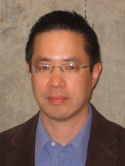
Dr. Lin has delivered briefings and invited talks to government, military, industry, and academic organizations, including the United Nations, US DOD, CIA, DARPA, US National Institutes of Health, US National Academies, Cal-EPA, Google, Apple, Tesla, Nissan, Bosch, Daimler Benz, Stanford, Harvard, US Naval Academy, US Air Force Academy, and UCLA.
The technology areas on which he focuses include robotics (especially military systems and autonomous cars), artificial intelligence, cyberwarfare, human enhancements, nanotechnology, space exploration ethics, virtual/mixed reality, and military technologies (including nonlethal weapons).
Dr. Lin earned his BA in philosophy from UC Berkeley and PhD from UC Santa Barbara, with a background in the biosciences.
RAJ RAJKUMAR is the George Westinghouse Professor in the Department of Electrical & Computer Engineering and Robotics Institute at Carnegie Mellon University (CMU), where he also directs the USDOT National University Transportation Center on Mobility and Metro21, CMU’s Smart Cities Initiative. In addition, he directs the Real-Time and Multimedia Systems Laboratory, and codirects the General Motors–Carnegie Mellon Connected and Autonomous Driving Collaborative Research Laboratory (CAD-CRL). He was also the founder of Ottomatika Inc. (acquired by Delphi in 2015), a company that delivered the software intelligence for self-driving vehicles.
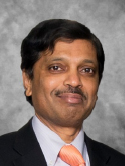
His research interests include all aspects of cyberphysical systems with an emphasis on self-driving vehicles, and his work has influenced many commercial operating systems. He has served as program and general chair of six international ACM/IEEE conferences on real-time systems, wireless sensor networks, cyberphysical systems, and multimedia computing/networking.
Dr. Rajkumar has authored one book, edited another, holds three US patents, and has more than 160 publications in peer-reviewed forums. Eight of these publications have received Best Paper Awards. He has given keynotes and distinguished lectures at international conferences and universities.
He is a fellow of the National Academy of Inventors and IEEE, a co-recipient of the IEEE Simon Ramo Medal, and an ACM Distinguished Engineer. He has received an Outstanding Technical Achievement and Leadership Award from the IEEE Technical Committee on Real-Time Systems.
CLAIRE TOMLIN is a professor of electrical engineering and computer sciences at the University of California, Berkeley, where she holds the Charles A. Desoer Chair in Engineering. She was assistant, associate, and full professor at Stanford (1998–2007) and joined Berkeley in 2005. She has been an affiliate at Lawrence Berkeley National Laboratory in the Life Sciences Division since January 2012. She works in hybrid systems and control, with applications to air traffic and unmanned air vehicle systems, robotics, energy, and biology.
Dr. Tomlin pioneered methods for computing the reachable set to encompass all behaviors of a hybrid system, which makes it possible to verify that the system stays within a desired safe range of operation
and to design controllers to satisfy constraints. She has applied these methods to collision avoidance control for multiple aircraft, and to the analysis of switched control protocols in avionics and embedded controllers in aircraft.
Her work has been tested in simulation and UAV test flights, and applied to two large commercial platforms: (1) Boeing aircraft: Her method was used to compute collision zones for two aircraft paired approaches, and was flown on a Boeing T-33 test aircraft, flying close to a piloted F-15. The F-15 pilot flew “blunders” into the path of the T-33, which used Dr. Tomlin’s algorithm to avoid collision. (2) Driven on Scania trucks: Dr. Tomlin’s method was used to derive a minimum safe distance between transport trucks driving in high-speed platoons for fuel savings, and revealed that the relative distance used today can be reduced significantly with this automation. Her work is also being considered for application in the Next Generation Air Transportation System (NextGen) and in Unmanned Aerial Vehicle Traffic Management (UTM).
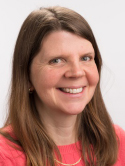
Dr. Tomlin is a MacArthur Foundation, IEEE, and AIMBE fellow. She has received the Donald P. Eckman Award of the American Automatic Control Council in 2003, the Tage Erlander Guest Professorship of the Swedish Research Council in 2009, an honorary doctorate from KTH in 2016, and in 2017 the IEEE Transportation Technologies Award.
ALI VELSHI is an MSNBC anchor and business correspondent with NBC News and cohost of the daily MSNBC Live with Velshi & Ruhle, MSNBC’s weekly business show Velshi & Ruhle, and MSNBC Live with Ali Velshi. Most recently he hosted Ali Velshi on Target, a nightly prime-time show on Al Jazeera America that spoke truth to power through debate, interviews, and on-the-ground reporting. He joined Al Jazeera America from CNN, where he was the channel’s chief business correspondent, anchor of CNN International’s World Business Today, and host of CNN’s weekly business roundtable Your Money. He also cohosted CNN’s American Morning.
Mr. Velshi has reported from the US presidential campaign trail and covered ISIS, the Syrian refugee crisis, the days leading up to the nuclear deal from Tehran, the tensions between Russia and NATO from Eastern Europe and the High Arctic, the debt crisis in Greece, and the funeral of Nelson Mandela in South Africa.
He was nominated for two 2016 Emmy Awards for work on dis-
abled workers and Chicago’s red-light camera scandal. In 2010 he was honored with a National Headliner Award for Business & Consumer Reporting for “How the Wheels Came Off,” a special on the near collapse of the American auto industry. Also that year CNN was nominated for an Emmy for his breaking news coverage of the attempted terror attack by Umar Farouq Abdulmuttalab on Northwest flight 253 to Detroit.
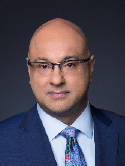
Mr. Velshi has reported extensively on the global financial crisis. Known for his exposition and explanation, he appeared as a guest economic analyst on Oprah, The View, and the Daily Show with Jon Stewart, explaining the causes of the meltdown in plain terms. He is the author of Gimme My Money Back (Sterling and Ross, 2008) and coauthor with CNN’s Christine Romans of How to Speak Money (Wiley, 2010).
He splits his time between New York City and Philadelphia. Active in the community, he serves on the board of the Chicago History Museum and is a member of the Council on Foreign Relations. He volunteers with the homeless outreach program of New York’s Center for Urban Community Services.
Born in Kenya and raised in Canada, Mr. Velshi graduated from Queen’s University in Ontario with a degree in religion, and was awarded an honorary doctorate from his alma mater in 2016.








